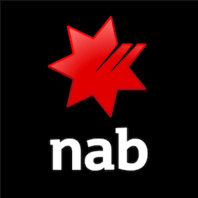Page 1, showing results 1-25 out of 33
Location
Duration
Start Date
Price
1176567.0-2023-06-22 2:00:00.Qa London United Kingdom
London, United Kingdom
4 Days
24th Jun 2024
1176569.0-2023-06-22 1:00:00.Qa Manchester United Kingdom
Manchester, United Kingdom
4 Days
24th Jun 2024
1176571.0-2023-06-22 1:00:00.Qa Birmingham United Kingdom
Birmingham, United Kingdom
4 Days
24th Jun 2024
1284952.0-2023-06-22 1:00:00.Qa Manchester United Kingdom
Manchester, United Kingdom
4 Days
24th Jun 2024
1176566.0-2022-07-14 05:00:00Qa London United Kingdom
London, United Kingdom
4 Days
22nd Jul 2024
1622890 2020-08-10 AU Melbourne coursemons User Experience Fundamentals
LVC, Australia
4 Days
15th Aug 2024
1718341 2020-08-10 Paris coursemons User Experience Fundamentals
LVC, France
4 Days
15th Aug 2024
1730140 2020-08-10 Berlin coursemons User Experience Fundamentals
LVC, Germany
4 Days
15th Aug 2024
1632534 2020-08-10 AU Sydney coursemons User Experience Fundamentals
LVC, Australia
4 Days
15th Aug 2024
1642204 2020-08-10 AU Canberra coursemons User Experience Fundamentals
LVC, Australia
4 Days
15th Aug 2024
1651344 2020-08-10 Auckland coursemons User Experience Fundamentals
LVC, New Zealand
4 Days
15th Aug 2024
1671708 2020-08-10 New York coursemons User Experience Fundamentals
LVC, United States
4 Days
15th Aug 2024
1660459 2020-08-10 Wellington coursemons User Experience Fundamentals
LVC, New Zealand
4 Days
15th Aug 2024
1753804 2020-08-10 Madrid coursemons User Experience Fundamentals
LVC, Spain
4 Days
15th Aug 2024
1741977 2020-08-10 Milan coursemons User Experience Fundamentals
LVC, Italy
4 Days
15th Aug 2024
1683249 2020-08-10 San Francisco coursemons User Experience Fundamentals
LVC, United States
4 Days
15th Aug 2024
1706503 2020-08-10 London coursemons User Experience Fundamentals
LVC, United Kingdom
4 Days
15th Aug 2024
1694790 2020-08-10 Chicago coursemons User Experience Fundamentals
LVC, United States
4 Days
15th Aug 2024
1553533 2020-09-07 Auckland coursemons User Experience Fundamentals
Auckland, New Zealand
4 Days
11th Sep 2024
1536900 2020-09-07 AU Melbourne coursemons User Experience Fundamentals
Melbourne, Australia
4 Days
12th Sep 2024
1542411 2020-09-07 AU Sydney coursemons User Experience Fundamentals
Sydney, Australia
4 Days
12th Sep 2024
1548058 2020-09-07 AU Canberra coursemons User Experience Fundamentals
Canberra, Australia
4 Days
12th Sep 2024
1558989 2020-09-07 Wellington coursemons User Experience Fundamentals
Wellington, New Zealand
4 Days
12th Sep 2024
1612464 2020-09-07 Madrid coursemons User Experience Fundamentals
Madrid, Spain
4 Days
12th Sep 2024
1605431 2020-09-07 Milan coursemons User Experience Fundamentals
Milan, Italy
4 Days
12th Sep 2024














